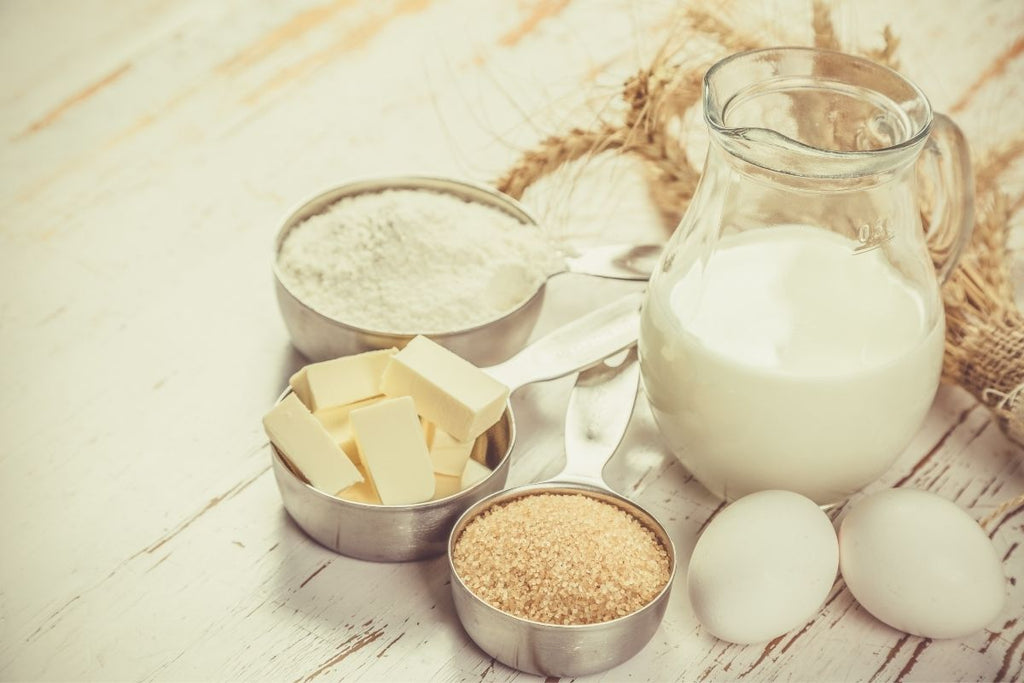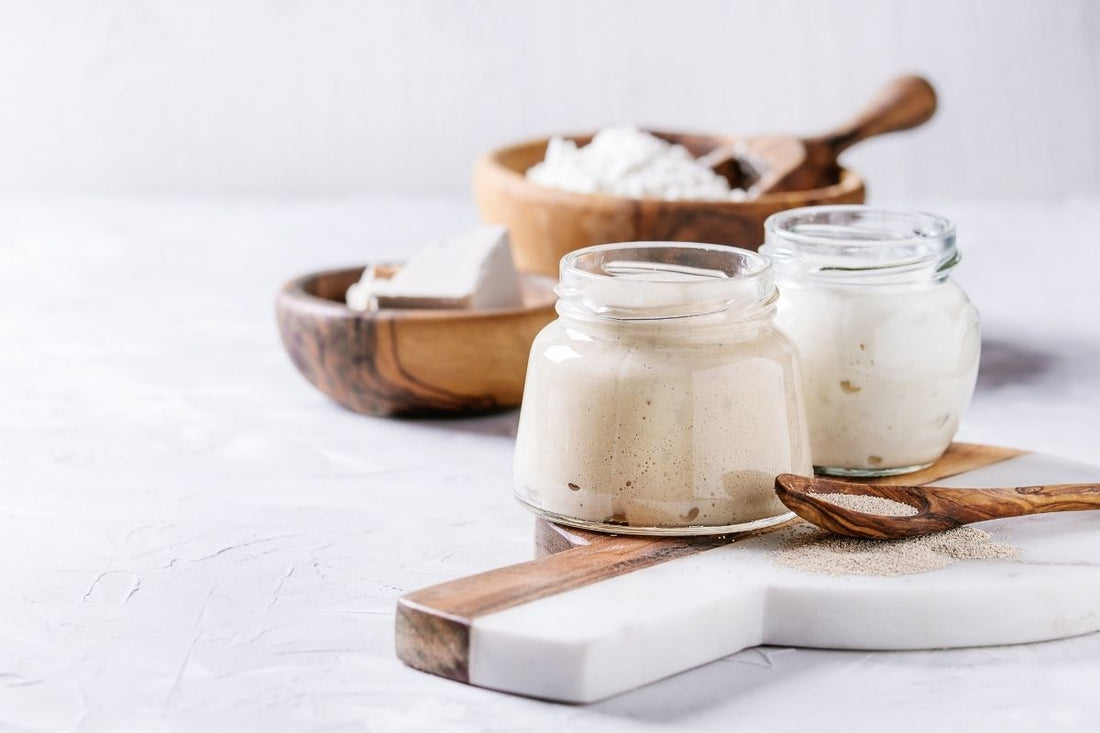Whether you're just starting your sourdough journey or looking to lift your baking game, ensuring you know how to measure ingredients properly is essential to baking the perfect loaf.
Any baker worth their salt knows that the secret to making the sourdough often lies in using the exact amount of ingredients. Although it is possible to bake familiar recipes based on look and feel, precision is essential when it comes to baking sourdough bread,
The intended ratio of a recipe and its ingredients is a science that requires precise measurement and practice. If you resort to guesswork then you can quickly come unstuck. This is particularly true of sourdough bread.
With the right measuring tools and techniques, you can ensure accurate measurement of ingredients every time so you can produce consistent results that look amazing and taste even better. So, before you even try to tackle our Sourdough Bread Recipe, I suggest that you take a look at this comprehensive guide to measuring ingredients.
Understanding the correct measuring technique for a particular ingredient will guarantee better baking results every time. After all, the difference between a recipe success and a recipe failure could lie within one gram of flour.
Jump to:
- Complete Sourdough Starter Kit
- Ultimate Beginners Guide to Sourdough
- How to knead, fold and stretch sourdough
Essential measuring tools for baking

1. Liquid measuring cups
Yes, there is a difference between measuring liquid and dry ingredients when it comes to using cups and you’ll need both if you want to master the art of baking. One of the main differences is that liquid cups have measuring lines well below the rims, so you have room for the ingredients to slosh a bit without spilling on the countertop. They also generally come in 1-cup, 2-cup, 4-cup and 8-cup measures
To accurately measure liquid ingredients into your liquid measuring cups, pour your liquid into the measuring cup, set the cup on a flat surface and squat down so the measuring line is at eye level and it meets the liquid ingredient.
2. Dry Ingredients Measuring Cups
It doesn’t matter if you’re baking sourdough on a lazy Sunday or competing in the Great British Bake Off, dry measuring cups are essential tools for any baker. Standard dry measuring cups are typically 1/4, 1/3, 1/2 and 1-cup measures and are meant to be filled to the brim so you can scrape off the excess. These measuring cups are used for dry ingredients such as flour, sugar, oats, cocoa powder, and more. I always recommend stainless steel because it’s more durable and can withstand the heat of the dishwasher. There’s nothing worse than discovering you’ve melted your plastic measuring cups because you’ve popped them in the dishwasher!
3. Measuring spoons
No kitchen is complete without a set of measuring spoons. They typically come in 1/4 teaspoon, 1/2 teaspoon, 1 teaspoon and 1 tablespoon measurements, so you can ensure accurate measurement of dry and liquid ingredients every time. That’s right, unlike measuring cups, measuring spoons are suitable for wet and dry ingredients. However, most people like to keep two sets handy, so they can use one for the wet ingredients (water, milk, honey) and the other for dry ingredients (flour, sugar, baking soda) simultaneously. Again, I recommend stainless steel for its added durability and accuracy.
4. Digital Kitchen Scale
A digital kitchen scale is a necessity when it comes to baking, because it takes the guesswork out of baking and ensures much more accurate measurement. Measuring by weight is more accurate – volume measurements are not exact. It is the best way to measure flour, but I often use it for measuring other sourdough additions, like chocolate. Using a scale eliminates the need for different tools, as you can measure your liquids and dry ingredients by weight directly in a bowl.
A digital scale that measures grams, kilograms, ounces, or pounds is the best option if you’re in the market. Always look out for one that resets to zero to measure your next ingredient and with at least a three-minute auto shut-off, so you don’t have to start all over again because it’s turned itself off.
5. Oven Thermometer
It might seem strange because all ovens have a temperature setting, but it’s not uncommon for ovens to run too hot or not hot enough. Using an oven thermometer is the only way to know how accurate your oven is, so you can ensure your recipes are cooked perfectly every time.
How to measure dry ingredients using measuring cups

Using measuring cups
-
Fill measuring cup until it overflows
Spoon your flour or other dry ingredients into the measuring cup until it overflows over the top of the cup. -
Level it off with the flat edge of a of a knife
Run the flat edge of a knife over the top of the measuring cup to level it off. This will ensure that you’ve measured the exact amount needed for the recipe.
Using measuring spoons
-
Fill measuring spoon until it overflows
To measure light and fluffy ingredients, like flour, add the ingredient into the measuring spoon with another spoon or scoop, until it overflows over the top of the measuring spoon.
-
Level it off with the back of a knife
Run the flat edge of a knife over the top of the measuring spoon to level it off and ensure you have an accurate amount of ingredients.
How to measure liquids
To accurately measure liquid ingredients into your liquid measuring cups:
- pour your liquid into the measuring cup,
- set the cup on a flat surface
- Squat down so the measuring line is at eye level and it meets the liquid
- If the liquid is at eye level, congratulations you’ve measured your ingredients accurately.
Baking tip: If you’re measuring sticky liquids like honey, spray your spoon with an oil spray to keep the liquid from sticking.
Baking tips for measuring ingredients
- When measuring light, dry ingredients such as flour, spices and baking powder using measuring cups, make sure not to scoop with the measuring cup and shake off the excess. This will cause the ingredient to become more packed and may result in you using more than you need.
- However, when measuring heavier dry ingredients like granulated sugar, you don’t have to use a spoon to fill your measuring cup as it will not pack like lighter, dry ingredients, and can scoop using the cup.
- For salt, granulated sugar, or other heavy ingredients, you can use your measuring spoon to scoop the ingredients.
- Be sure to know whether the ingredient you are using is a dry or liquid. Some may surprise you, like yogurt and peanut butter which are considered dry ingredients as they are not pourable liquids.

